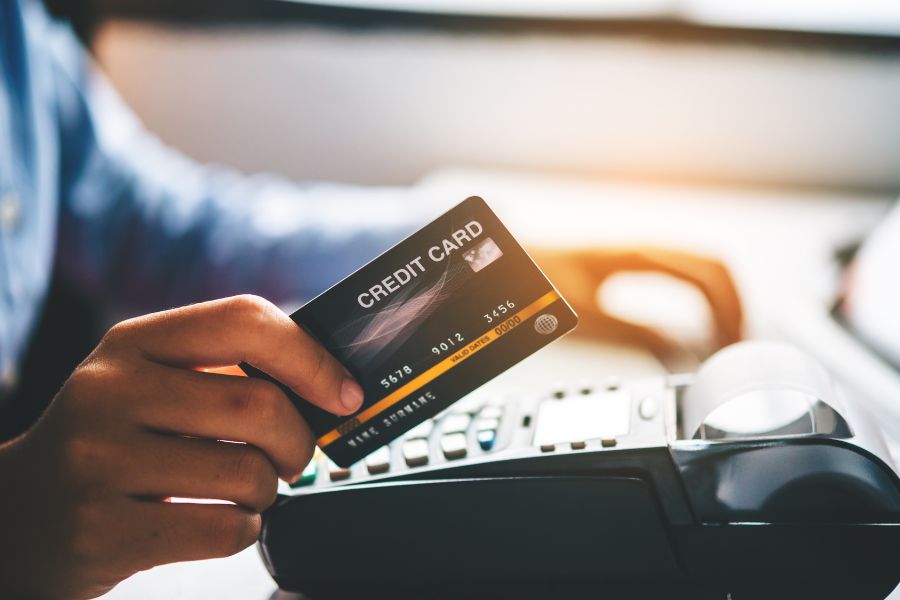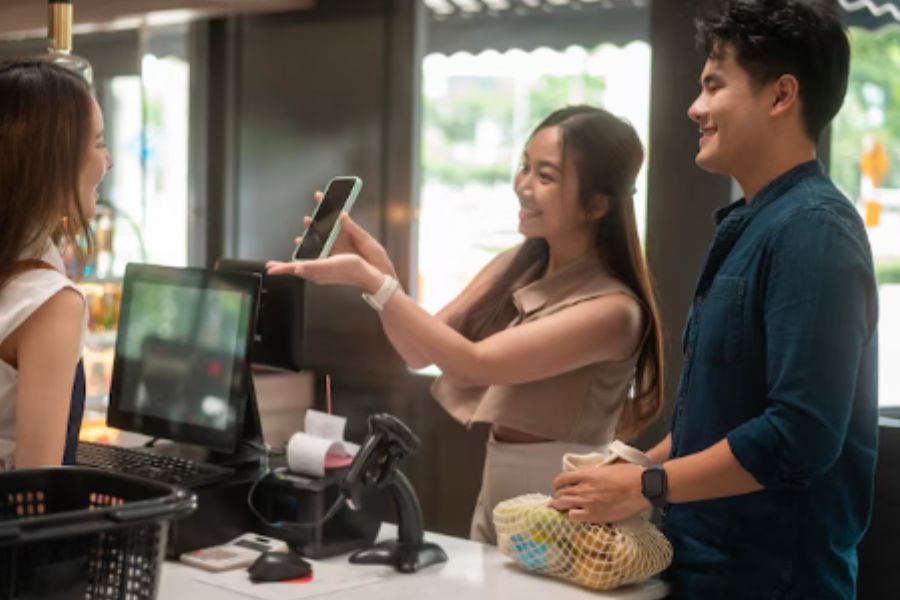In setting up an eCommerce store on Shopify, a common inquiry we receive is how to use card readers for processing credit and debit card payments. Shopify card readers make it straightforward to accept in-person payments by securely reading customers’ credit cards.
In this post, we will explain what Shopify card readers are, walk through how to pair chip reader with Shopify POS system, and compare their costs and key functionalities. You’ll also find step-by-step instructions to help you pair and set up your Shopify card reader with ease, so you can start accepting payments right away.
Highlights:
- Shopify POS solutions are all-in-one systems that connect your online and in-store operations, enabling seamless inventory management, secure transactions, and consistent customer experiences.
- To optimize payment processing with a chip reader, ensure your reader is fully charged, regularly update the Shopify POS app, and use a strong, stable Bluetooth connection for uninterrupted transactions.
Overview of the Shopify POS Ecosystem
In 2023, global retail e-commerce sales reached $5.8 trillion, with forecasts suggesting growth to over $8 trillion by 2027. Within this dynamic market, Shopify holds a strong third-place position, commanding a 10.32% market share.
To stay ahead, the Shopify POS ecosystem is evolving.
Key Features of the Shopify POS Ecosystem:
- Hardware Integration: Shopify POS supports card readers, barcode scanners, receipt printers, and cash drawers, catering to various store setups.
- Software Functionality: Features like transaction processing, inventory management, and customer tracking help businesses stay organized.
- Omnichannel Capabilities: Unified customer profiles, in-store pickups, and flexible return policies seamlessly connect online and offline sales.
- Mobile Accessibility: The Shopify POS app allows staff to process sales anywhere in the store, improving customer experiences.
- Shopify Payments: A built-in payment processor for contactless cards, chip cards, and digital wallets, eliminating the need for third-party systems.
Payments processed through Shopify Payments support contactless cards, chip cards, digital wallets, and gift cards, streamlining operations without relying on third-party systems. Inventory management synchronizes stock across locations with real-time updates. Analytics tools offer actionable insights into sales, customer behavior, and team performance.
Step-by-Step: How to Pair Your Chip Reader with Shopify POS
Shopify’s card readers simplify secure payment processing. Follow these steps to pair your chip reader with Shopify POS and get started:
Step 1: Install the Shopify POS App
Download the Shopify POS app from the App Store (iOS) or Google Play (Android). Once installed, this app becomes your central hub for managing transactions and sales.
Step 2: Connect the Shopify Card Reader
Attach the card reader to your device using the audio jack or charging port, depending on the model. The reader’s straightforward design allows for quick connections. Ensure it is properly seated to avoid connection issues during payments.
Step 3: Launch the Shopify POS App
Open the Shopify POS app from your home screen. Once inside, you’ll find an intuitive interface that guides you through managing products, applying discounts, and processing sales.
Step 4: Input Products for Sale
Within the app, input the products or services you intend to sell. The app lets you apply discounts directly, ensuring that pricing is clear and accurate for your customers. This preparation helps keep the checkout process smooth.
Step 5: Initiate Payment
When a customer is ready to purchase, tap the “Charge” button on the app to initiate the payment process. This step signals that the transaction is underway.
Step 6: Choose the Payment Method
Customers can select how they’d like to pay:
- Swipe: Run magnetic stripe cards through the reader.
- Insert: Place chip cards into the reader for processing.
- Tap: Tap contactless cards or use digital wallets like Apple Pay and Google Pay.
The card reader supports these options to accommodate a wide range of customer preferences.
Step 7: Collect a Signature (if required)
If the payment method calls for a signature, customers can sign directly on your device’s screen. This step adds an extra layer of security for certain transactions.
Step 8: Confirm the Payment
Review the payment details, including the amount and purchased items, to ensure accuracy before finalizing the transaction. This step helps avoid any confusion or errors.
Step 9: Hand out a Receipt
Provide the customer with a receipt by email or text. This electronic option is convenient and environmentally friendly. Receipts include a summary of the purchase for easy reference.
Step 10: Finalize the Sale
Once the payment is approved, hand over the purchased items to the customer. This marks the completion of the transaction. The Shopify card reader works seamlessly with the POS app to simplify the payment experience for both you and your customers.
How Much Does Shopify Card Readers Cost?
Shopify provides a range of card readers tailored to suit various business requirements. Below is an overview of the popular models and their pricing:
Tap & Chip Reader
The Tap & Chip Reader supports both contactless (tap) and chip card payments. Its Bluetooth connectivity allows for wireless operation, making it a convenient choice for small businesses and mobile sellers.
- Cost: $49
- Suitable for accepting contactless and chip card payments.
- Works with major credit cards, debit cards, and mobile wallets like Apple Pay and Google Pay.
- Compact and portable, making it ideal for businesses on the move.
- Connects via Bluetooth for compatibility with the Shopify POS system.
Chip and Swipe Reader
The Shopify Chip and Swipe Reader is a wireless device compatible with iPads, iPhones, and Android devices. Payments are processed by inserting or swiping a card and recording the transaction on your POS screen. To pair the chip reader with your Shopify POS system, simply connect the reader to your device. It includes a countertop base, offering flexibility for mobile setups or businesses starting with card payments.
- Cost: $29
- Supports chip and swipe transactions.
- Durable and compact, fitting well with small and mid-sized businesses.
- Provides reliable card payment processing.
- Wireless connection through Bluetooth for flexible usage.
Swipe Card Reader
The Swipe Card Reader with an audio jack provides an affordable option for online retailers. Simply plug it into the audio jack of your iPhone, iPad, or Android device to process payments. iOS users should note that disabling the card reader setting in General Settings is necessary to enable audio playback.
- Cost: $29
- Designed for swipe-only card payments.
- Works with devices through audio-jack, 30-pin, or Lightning connectors.
- An affordable choice for businesses handling swipe transactions.
- Lightweight and portable, suitable for mobile setups like pop-up shops.
Tap, Chip, and Swipe Reader
This reader integrates tap, chip, and swipe payment methods into a single device, allowing businesses to accommodate a wide range of customer payment preferences.
- Cost: $79
- It combines the ability to accept tap, chip, and swipe payments on a single device.
- Compatible with contactless cards, chip cards, and mobile wallets.
- Perfect for businesses with varied payment needs.
- Bluetooth functionality makes it easy to connect to the Shopify POS app.
Moneris iPP320 Terminal
For Shopify POS users on an iPad, the Moneris iPP320 terminal provides a simple solution for processing card payments. It supports all major credit and debit cards, as well as contactless options like Apple Pay and Android Pay.
- Cost: Typically priced around $349 or more, depending on location and payment plan.
- Built for high-traffic businesses needing an all-in-one solution.
- Accepts chip, swipe, and contactless payments with added PIN pad security.
- Equipped with advanced security measures to meet industry standards.
These card readers are crafted to meet diverse payment needs, simplifying the checkout process and supporting smooth transactions for businesses of all types.
Alternative POS Solution for Shopify Store – ConnectPOS
ConnectPOS is a practical alternative to the default Shopify POS system, providing businesses with a flexible and scalable solution.
- Wide Compatibility: ConnectPOS integrates smoothly with iOS, Windows devices, and various hardware peripherals, providing businesses with a comprehensive and adaptable point-of-sale system.
- Real-Time Data Synchronization: Synchronize online and offline operations across multiple locations, ensuring accurate inventory and order updates at all times.
- Tailored Features: Fully compatible with Shopify and Shopify Plus, ConnectPOS can be tailored to meet unique business requirements, offering flexibility for even the most detailed demands.
- Manage Operations Across Locations: Handle multiple stores seamlessly with features for inventory and customer management. Use customer profiles and purchase histories to enhance engagement through loyalty programs and gift cards.
- Sell Across Channels: Enable omnichannel capabilities for a unified shopping experience. Manage products, orders, and fulfillment efficiently, regardless of the sales platform.
- Gain Actionable Insights: Access real-time reports on revenue, products, and customer data to make informed decisions that drive profitability.
For Shopify store owners seeking flexibility in managing their operations across locations and sales channels, ConnectPOS is a strong alternative that fits diverse needs.
FAQs: Pair Chip Reader with Shopify POS System
- What do I need to do to pair chip reader with shopify POS system?
Ensure your device has Bluetooth enabled and the Shopify POS app installed. Your chip reader should be charged and turned on.
- How do I start the pairing process?
Open the Shopify POS app, go to the hardware settings, and select the chip reader from the list of available devices. Follow the on-screen instructions to connect.
- What should I do if the chip reader doesn’t connect?
Check the Bluetooth settings on your device to confirm the reader is detected. Restart both the chip reader and your device if needed, then retry the pairing process.
- Is the chip reader compatible with all devices?
The Shopify chip reader works with iOS and Android devices. Make sure your device is running the latest version of the operating system for compatibility.
Conclusion
You’re running a physical storefront or offering in-person sales at events, Shopify card readers provide a straightforward, secure solution to process payments efficiently. With a clear understanding of the different card reader options and following the instructions to pair chip reader with shopify POS system, you can ensure a smooth transaction experience for both you and your customers.
If you’re looking for even more flexibility and advanced features, consider ConnectPOS as an alternative POS solution for your Shopify store. ConnectPOS offers enhanced capabilities, such as multi-store management, real-time reporting, and seamless integration with Shopify, allowing you to scale and manage your business more effectively. Contact us now!



